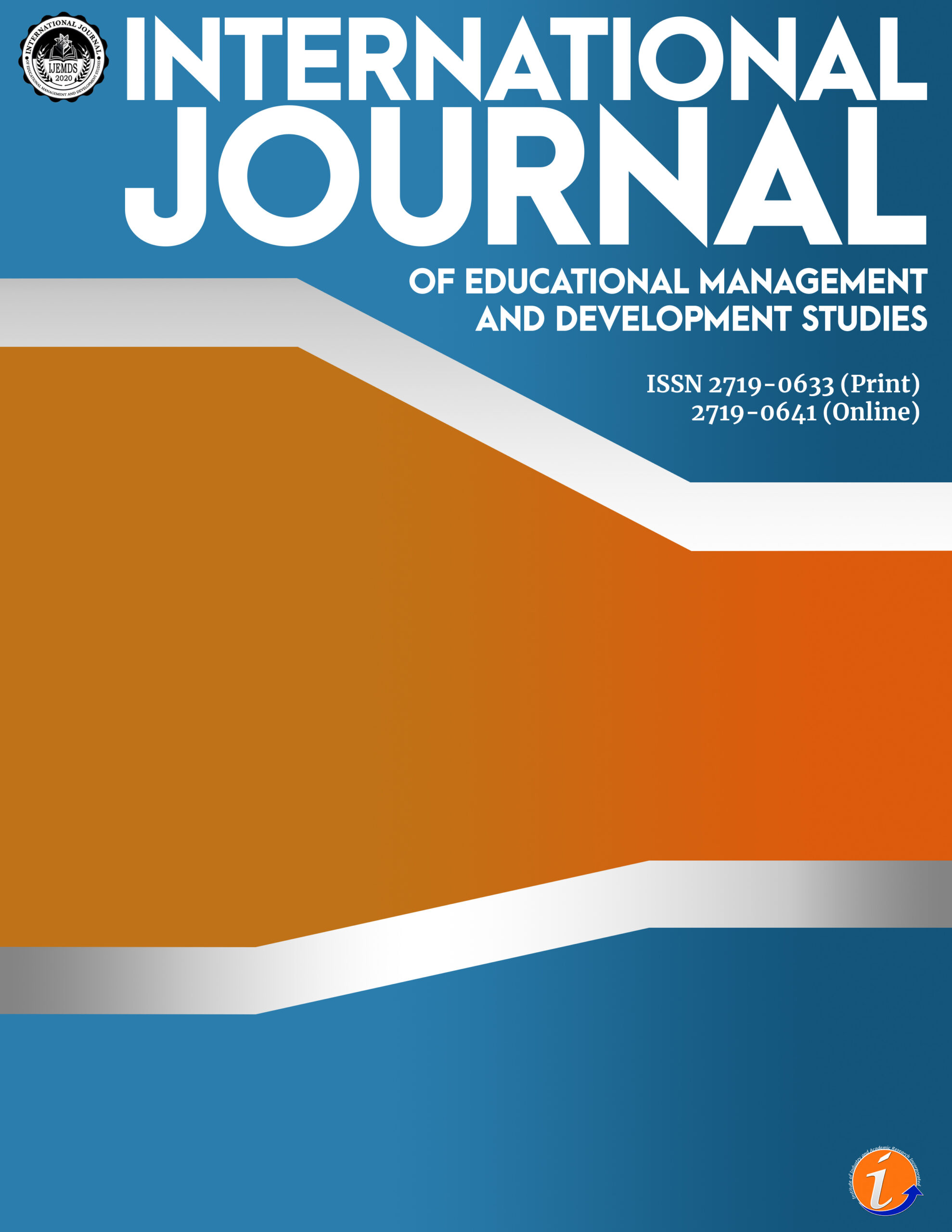The Covid-19 pandemic compels countries to adopt remote learning without sufficient research. This resulted to unforeseen online learning barriers experienced by the students. This study investigated the relationship between online distance learning barriers and students’ perception of the delivery of instructions in the new normal. Specifically, it identified the extent of online distance learning barriers in terms of individual, technological, domestic, institutional, and community, and the level of delivery of instruction in the new normal. Through descriptive-correlational research design using a survey questionnaire, this study assessed the perception of the 172 high school students. After subjecting to chi-square and Pearson r, data revealed that, of all the variables involved, only family monthly income was found to have a significant relationship to online learning barriers in terms of individual and technological factors. In addition, family monthly income was found to have a significant relationship with the level of delivery of instructions while a negative relationship between technological and institutional barriers with the level of delivery of instructions in the new normal was also found. In light of the results, the study recommends that teachers might improve the delivery of instructions using learning materials, which are based on the capacity of students. Leniency in terms of submission of requirements can be practiced and if not, alternative forms of learning must be available.
delivery of instruction, descriptive correlational study, online learning barriers, online learning
Mark Paul O. Moraleja. Corresponding author. Doctor of Philosophy in Psychology (unit earner), Instructor 1, Laguna State Polytechnic University, San Pablo City
Angele T. Pereja. Master of Arts in Education Major in Educational Management. Teacher 1, Department of Education
Abu E. (2020). Learning Must Continue in the New Normal. Manila Times, October 22, 2020. https://www.manilatimes.net/
Ashong C. and Commander N. (2012). Ethnicity, Gender, and Perceptions of Online Learning in Higher Education. Merlot Journal of Online Learning and Teaching, Vol 8. No. 2.
Baticulon R. et al (2020). Barriers to online learning in the time of COVID-19: A National Survey of Medical students in the Philippines https://www.medrxiv.org/
Becker, K., Newton, C., & Sawang, S. (2013). A learner perspective on barriers to e-learning. Australian Journal of Adult Learning, 53(2), 211–233.
Carroll S. (2017) Does Gender Matter in Online Learning? https://silo.tips/download/does-gender-matter-in-online-learning
Center for Development Programs in the Cordillera (2020). “Education in the New Normal: Modular Learning in Sagada”, cdpckordilyera.org
Decker J. and Beltran V. (2016). Student’s Sense of Belonging in Online Classes: Does Age Matters. International Journal of Online Pedagogy and Course Design (IJOPCD) 6(3). DOI: 10.4018/IJOPCD.2016070102
Department of Education (2020) Deped prepares SLM for education’s new normal https://www.deped.gov.ph/2020/07/02/deped-prepares-self-learning-modules-for-educations-new-normal/
Department of Health (2021) Covid19 Case Tracker. https://doh.gov.ph/2019-nCoV
Department of Information and Communication Technology (2021), “PH moves up in mobile internet speed global rankings” https://dict.gov.ph/ph-moves-up-in-mobile-internet-speed-global-rankings/#:~:
Fishel F. and Ferrell J, (2010). Does User Age Differ in Perceptions of Online Learning For Certified and Licensed Pesticides? Journal of Extension, Volume 48. No.5 https://www.joe.org/joe/2010october/rb5.php
Fleming, J., Becker, K., and Newton, C. (2017). Factors for successful e-learning: does age matter. Education + Training, Vol. 59 No. 1, pp.76-89. https://doi.org/10.1108/ET-07-2015-0057
Himmelsbach V. (2021) How Technology in the Classroom Can Impact Student Learning. https://tophat.com/blog/how-does-technology-impact-student-learning/
Honey C. (2014). For most Students Achievement Reflects Income. https://www.schoolnewsnetwork.org/
Larbi-Apau J. et al (2020) Barriers to online learning adoption in higher education, https://www.universityworldnews.com/
Latchem C. (2014). Gender Issues in Online Learning” Culture and Online Learning: Global Perspectives and Research. Stylus Publishing
Morante A. (2017). Gender Differences in Online Participation: Examining a History and Mathematics Open Foundation Course. Australian Journal of Adult Learning Vol.57, Number 2.
Muilenburg L. and Berg Z. (2005). Student Barriers to Online Learning: A Factor Analytic Study Student barriers to online learning: A factor analytic study. Distance Education, 26:1, 29-48, DOI: 10.1080/01587910500081269
Pappas C. (2016). Top 8 eLearning Barriers That Inhibit Online Learner’s Engagement With eLearning Content https://elearningindustry.com/
Reich J. and Hansen J. (2015) How socioeconomic status impacts online learning. https://news.mit.edu/2015/how-socioeconomic-status-impacts-online-learning-1217
Simonds T. and Brock B. (2014). Relationship between Age, Experience, and Student Preference for Types of Learning Activities in Online Courses. Journal of Educators Online, 2014 January, 11(1)
Suarez- Orozco C., Yoshikawa H., and Tseng V. (2015). Intersecting Inequalities: Research to Reduce Inequalities for Immigrant-Origin Children and Youth. UCLA & William T. Grant Foundation Hirokazu Yoshikawa, New York University Vivian Tseng, William T. Grant Foundation
Taboada, J. (2020). DepEd Schools Divisions to adopt ‘flexible’ learning for coming school year https://palawan-news.com/deped-schools-divisions-to-adopt-flexible-learning-for-coming-school-year/
Talbert R. (2020) What are the biggest barriers to online learning? http://rtalbert.org/barriers-for-online-learning/
Tartaglia A. (2020). The Potential Impact of Online Learning on Economically Disadvantaged Students. Education Doctorate Dissertations. 9. https://research.library.kutztown.edu/
Tibon J. (2020). The New Normal in Basic Education. https://www.lexology.com/
Cite this article:
Moraleja, M.O. & Pereja, A.T. (2022). Online distance learning barriers and their implication in the delivery of instruction in the new normal. International Journal of Educational Management and Development Studies, 3(3), 209-226. https://doi.org/10.53378/352919
License:
![]()
This work is licensed under a Creative Commons Attribution (CC BY 4.0) International License.










